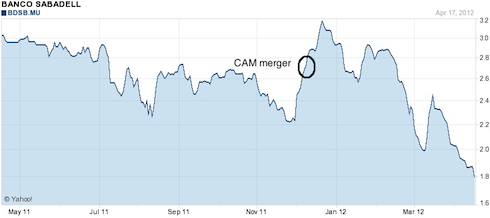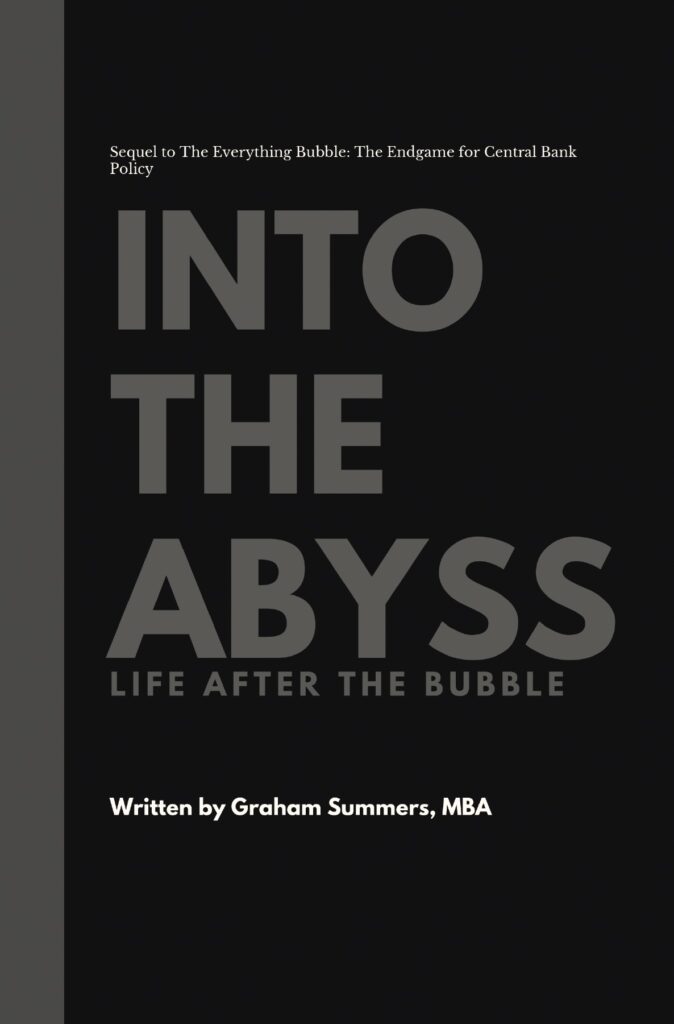In a previous article I began delving into the toxic sewer that is the Spanish banking system. At the root of the problem is the previously unregulated Spanish cajas or regional/ local banks which own as much as 56% of all Spanish mortgages.
To give you an idea of how bad things are with the cajas, consider that in February 2011 the Spanish Government implemented legislation demanding all Spanish banks have equity equal to 8% of their “risk-weighted assets.” Those banks that failed to meet this requirement had to either merge with larger banks or face partial nationalization.
The deadline for meeting this capital request was September 2011. Between February 2011 and September 2011, the number of cajas has in Spain has dropped from 45 to 17.
Put another way, over 60% of cajas could not meet the capital requirements of having equity equal to just 8% of their risk-weighted assets. As a result, 28 toxic caja balance sheets have been merged with other (likely equally troubled) banks or have been shifted onto the public’s balance sheet via partial nationalization.
The markets are well aware that this policy has only spread the toxic garbage, not fixed it. Case in point, take a look at the chart for Banco Sabadell which was merged with toxic Caja de Ahorros del Mediterráneo or CAM for short.
 The merger increased Banco Sabadell’s size by 75%… and the market saw this as a good thing for a total of two weeks: shares are now down 30% from their merger levels.
The merger increased Banco Sabadell’s size by 75%… and the market saw this as a good thing for a total of two weeks: shares are now down 30% from their merger levels.
Banco Popular, which acquired failing caja Banco Pastor, has experienced a similar fate, falling to a new low soon after the merger:
 My point with all of this is that merging one garbage bank with another larger slightly less garbage bank doesn’t solve anything. The market knows this, which is why we see these banks continuing to collapse despite being merged.
My point with all of this is that merging one garbage bank with another larger slightly less garbage bank doesn’t solve anything. The market knows this, which is why we see these banks continuing to collapse despite being merged.
Having addressed all of this, I firmly believe that no one, not even the Spanish Government has a clue how much toxic garbage debt exists in the Spanish banking system.
Moreover, it’s not as though the Spanish Government is heavily incentivized to come clean about the true nature of the Spanish banking system even if it did know the facts.
Case in point, the Government just admitted that Spanish banks will need another €29 billion in loan loss provisions yesterday, before revealing that “problem loans” for the Spanish banking system are now at an 18-year high of 8.15% (€140 billion of the total €1.7 trillion in loans within the Spanish Banking System).
Put another way, by the Spanish Government’s own admission (read extremely conservative estimate) nearly one out of every €10 leant out by Spanish banks is probably not going to be paid back.
And things are only going to get worse. Spanish citizens (at least those that have money) have been pulling their money out of Spain en masse: €65 billion left the Spanish banking system in March 2011 alone.
This flight of capital will result in higher leverage levels for Spanish banks (already leveraged at 20 to 1) and smaller capital buffers with which to address future losses.
Put another way, capital is leaving Spain at the very time when Spanish banks need it the most. Indeed, things have gotten so bad that the Spanish Government has limited cash transactions over €2,500.
Simply put, Spain’s banking system is an absolute sewer of toxic debts that no one, likely not even the Spanish Government or Spanish Central Bank, truly has a grip on.
The few facts that we do know are:
- Total Spanish banking loans are equal to 170% of Spanish GDP.
- Troubled loans at Spanish Banks just hit an 18-year high.
- Spanish Banks are drawing a record €316.3 billion from the ECB (up from €169.2 billion in February).
- The share prices of Spanish banks that were merged with cajas have broken to new lows.
None of this is good news at all. Especially when you also consider that…
Spanish banks need to roll over 20% of their debt this year.
That’s correct, one fifth of all Spanish bank bonds need to be paid off or renegotiated in 2012. And this is happening at a time in which Spanish interest rates are rising. Indeed, the Spanish ten year is approaching the dreaded 7%: the level at which Greece and other PIIGS sought bailouts.
The only problem is: Spain is far too big to be bailed out.
With that in mind, I’m already positioning subscribers of Private Wealth Advisory for the upcoming EU collapse. Already we’ve seen gains of 6%, 9%, 10%, even 12% in less than two weeks by placing well-targeted shorts on a number of European financials.
And we’re just getting started. Indeed, we just opened five new trades a few weeks ago Friday. Already we’ve closed out three of them for gains of 6%, 6%, and 9%.
So if you’re looking for the means of profiting from what’s coming, I highly suggest you consider a subscription to Private Wealth Advisory. We’ve locked in 49 straight winning trades since late July (thanks to the timing of our trades), and haven’t closed a single losing trade since that time.
Because of the level of my analysis as well as my track record, my work has been featured in Fox Business, CNN Money, Crain’s New York Business, Rollingstone Magazine, and more. Which is why we’re raising the price of Private Wealth Advisory from $249 to $399. The reason? This is a premium quality newsletter than commands a premium price.
So this is the last day during which you can subscribe Private Wealth Advisory at the soon to be old price of $249. This is literally the last call (today by noon… technically it was last night at midnight, but I’m giving those in different time zones an extra 12 hours to take advantage of this deal).
To do so…
Best Regards,
Graham Summers
Chief Market Strategist
Phoenix Capital Research




